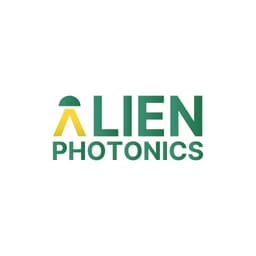


Nd:YAG Dual Band DBHR Mirrors
Nd:YAG Dual-Band DBHR Mirrors are designed to reflect two wavelengths of Nd:YAG laser fundamental (1064 nm) and harmonic (532, 355, 266 nm). Custom materials, size, shape, AOI, LIDT and other characteristics available.
Estimated Shipping Date: May 15, 2025 - May 29, 2025
* - Shopping cart pricing is based on the most recent pricing and it is NOT ORDERING, but requesting an official quotation which should typically reach You within 1-2 business days.
- Variants
- Description
- Applications
- Characteristics
Nd:YAG Dual Band (DBHR) Mirrors: description, production, handling, customization and GDD optimization
What is Nd:YAG Dual Nand (DBHR) Mirror
Nd:YAG dual band (DBHR) mirror is an optical component coated with dielectric thin-film coating stack. This mirror is specifically designed to reflect two of Nd:YAG laser wavelengths (e.g. Fundamental (1064 nm) and second harmonic (532 nm)) at the time. Unlike dichroic mirrors (harmonic separators) which are designed to transmit one wavelength and reflect another, DBHR mirrors are specifically used to direct both wavelengths in the same direction within the optical system. Although Nd:YAG DBHR mirrors are great replacement for BBHR mirrors, due to higher reflection and laser induced damage threshold (LIDT) at design wavelengths. Also, one Nd:YAG dual band (DBHR) mirror can replace two Nd:YAG laser line (HR) mirrors. It can be very cost beneficial (only one coating run for this double-purpose component), but we just recommend to take into account lower LIDT and possible lower reflection value.
How Nd:YAG Dual Band (DHBR) Mirrors are manufactured?
Nd:YAG dual band (DBHR) mirrors production is very similar to other dielectric mirrors and also starts with optical substrate preparation – polishing them. Then, once coating design is finished, aiming for two specific Nd:YAG wavelengths, these substrates are coated using one of the optical coating technologies and Nd:YAG dual band DBHR mirror is produced. Final optical metrology is conducted before stocking or sending these mirrors to a customer.
How to handle and clean Nd:YAG Dual Band (DBHR) Mirrors
Dielectric coated Nd:YAG dual band (DBHR) mirrors are way more resistant to physical contact and environmental impact when comparing to bare metal coated mirrors (Au, Ag, Al). Regular cleaning and handling instructions of dielectric coated optics are recommended by Alien Photonics.
Custom Nd:YAG Dual Band (DBHR) Mirrors
Standard options are just most popular designs of Nd:YAG Dual Band (DBHR) mirrors. Alien Photonics team is ready to design custom options for other combinations (e.g 213+266 nm) or custom angles of incidence (AOI). Custom size or shape? Challenge us with your imagination.
Low GDD Nd:YAG Dual Band DBHR Mirrors
When optimized for low group delay dispersion (GDD), these Alien Photonics mirrors can be great addition in applications where broadened pulse is unwanted effect.
Nd:YAG Dual Band (DBHR) Mirrors for medical lasers, material procesing, spectroscopy and other applications
Nd:YAG Dual Band (DBHR) mirrors are specifically designed to efficiently reflect two Nd:YAG laser wavelengths in various devices.
Nd:YAG - based medical lasers with Dual Band (DBHR) Mirrors
Nd:YAG DBHR mirrors reflect both 532 nm (surface level cosmetic procedures) and 1064 nm (deep tissue penetration) thus enabling the construction of multi-functional laser devices.
Dual Band (DBHR) Mirrors for precise material processing using Nd:YAG laser
By combining efficient reflection of 1064 nm (general cutting and welding) with 355 nm (fine micromachining) Alien Photonics Nd:YAG DBHR mirrors allow single laser system to handle tasks ranging from industrial fabrication to delicate semiconductor processing.
Nd:YAG DBHR Mirrors for spectroscopy
Dual wavelength capabilities are ensured when Alien Photonics Nd:YAG HR mirrors are implemented in Raman spectroscopy equipment Visible (VIS) Raman at 532 nm and ultra-violet (UV) resonance Raman at 355 nm spectroscopy in one place provides dual-wavelength capabilities for enhanced molecular analysis and biochemical research.
Nd:YAG Dual Band (DBHR) Mirrors for inspection devices
During the inspection of paper currency, 532 nm wavelength reveals watermarks and security threads, while 266 nm ultra-violet (UV) light excites security features invisible to naked eye. Alien Photonics Nd:YAG dual wavelength (DBHR) mirror enhances accuracy and reliability of paper currency inspection (verification).
Nd:YAG Dual Band (DBHR) Mirrors for semiconductor manufacturing and lithography
While 355 nm wavelength enables standard photolithography processes, the second reflected band of Nd:YAG DBHR mirror (266 nm) is used for high-resolution patterning. This combination allows universal manufacturing capabilities when processing semiconductor wafers.
Characteristics of standard Nd:YAG Dual Band (DBHR) Mirrors
Typically Nd:YAG DBHR Mirrors (unless otherwise specified in offer) are manufactured with bellow specifications. However, due to constant improvements, all parameters are subject to change. Please, treat contents of this table as guidelines, these characteristics can be changed based on your needs. Just let us know !
| Characteristics | Typical Value |
|---|---|
| Substrate Characteristics | Value |
| Substrate material | UVFS |
| Diameter tolerance | +0.0 / -0.15 mm |
| Thickness tolerance | ±0.1 mm |
| Protective chamfers (bevels) | 0.25 mm x 45° |
| Flatness | λ/8 @ 632.8 nm (per C.A.) |
| Surface quality | 20-10 S-D (acc. to MIL-PRF-13830B) |
| Coating Characteristics | Value |
| Clear Aperture (C.A.) | >85% (per C.A.) |
| Group Delay Dispersion (GDD) | Optimization available upon request |
| Laser Induced Damage Threshold (LIDT) | >5 J/cm² @ 1064 nm, 10 ns, 10 Hz |
| Certificates | Availability |
| Certificate of Conformance (COC) | Yes. Available upon request. |
| RoHS | Yes. Available upon request. |
| Conflict minerals | Yes. Available upon request. |